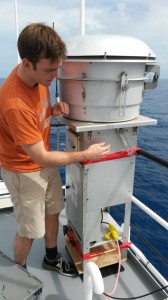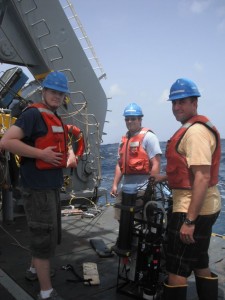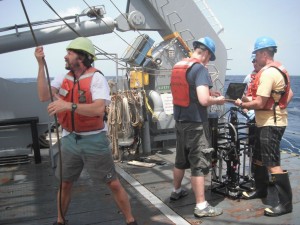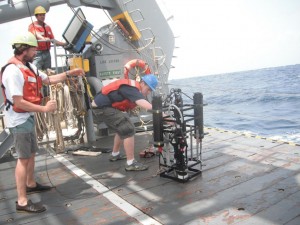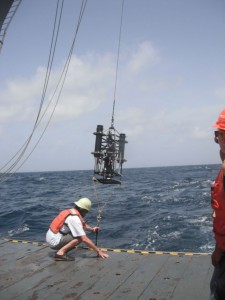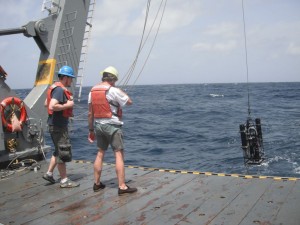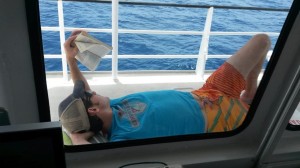
Sam, with today’s book.
Time spent on a research vessel can be very busy, especially while working at a research station. With all the different projects going on at once, the ship is often bustling with activity. Still, there are often long stretches of time between stations when there isn’t much work to do. Even the crew gets some time off from running the ship to relax and unwind. So, what do you do when you’re in the middle of the ocean and you’ve got some time to kill?
If the weather is good, you’ll often see scientists and crew alike out on the deck enjoying the sunshine. Some sit and talk and watch the water. Others take time to stretch their legs and walk around the deck. Walking on a ship as it rocks back and forth can be really good exercise!
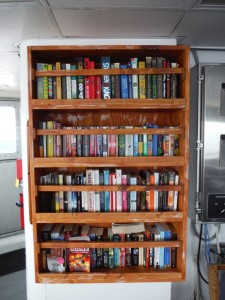
Our ship’s library.
We also have a small supply of books that people can borrow to help pass the time. Technician Sam is often seen with a book in his hand. He is such a fast reader that he usually finishes one every day! On nice days many of us like to lie outside with a good book.
There is also a comfortable lounge on the ship, equipped with a large flatscreen TV and a stock of DVDs, including movies and TV shows. Unfortunately, we can’t get cable out here in the deep blue sea, and the internet connection is too slow to stream from websites like Netflix or Hulu. So if you’ve already seen all the movies we have onboard, you may want to bring your own supply.
We currently only have one computer onboard the ship with an internet connection. During downtime, many of us take time to email our friends and family and let them know how things are going on the ship. We also use it to update the blog, of course!
Sometimes, if the crew spots a school of fish or expects to see one near a mooring, some of them will get put out some lines and go fishing. On our first day out, Ronnie caught a huge mahi mahi. He and Jacob had their lines out yesterday over the stern, but didn’t have much luck. Maybe next time…

Me, hard at work!
There are lots of other activities you can come up with to keep busy on a boat. The other day, Karen S organized a game for the scientists and crew to play. Some people bring musical instruments to play, or crafts to work on. On this trip, I’ve brought along a very special project: I’m sewing my wedding gown! I’ve been working on it for several weeks and it is almost finished. It is almost entirely sewn by hand, and I can’t wait to wear it this September. Once I get home, I’ll be finishing up the groom’s suit, too!
Of course, it’s not all fun and games. There’s a lot of work to be done, but when you love it as much as we do, the science can be just as fun as our time off.
-by Lauren Seyler
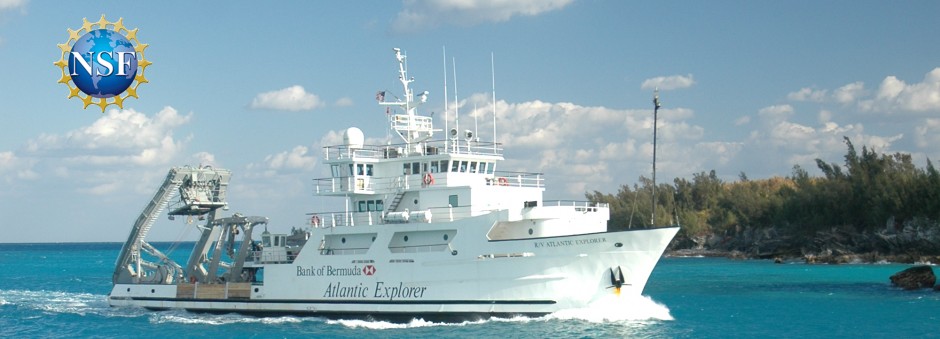

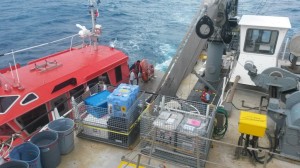
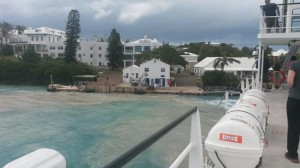
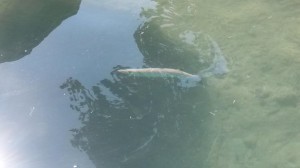




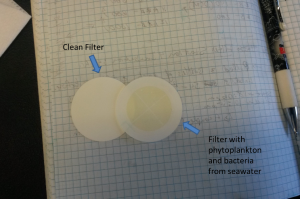
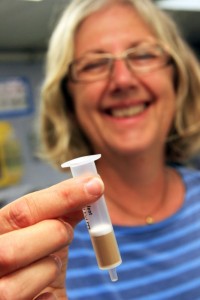



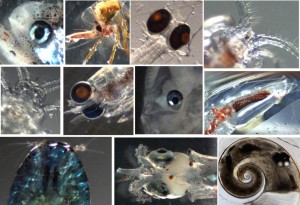

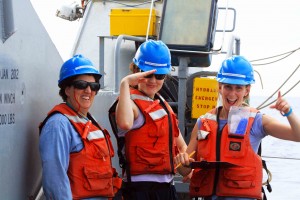
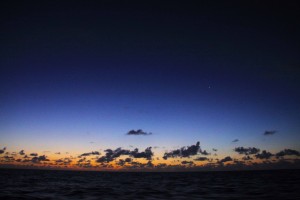

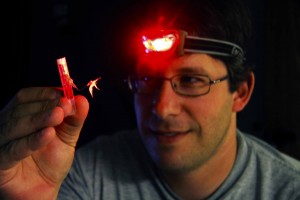
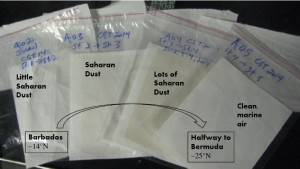 ut 40 cubic feet per minute). The sampler is also attached to a wind sensor so that it will only collect air when the wind is coming from the bow sector (or front) of the ship. This way I can avoid contamination from the ship’s diesel engine exhaust which is released toward the stern or back of the ship.
ut 40 cubic feet per minute). The sampler is also attached to a wind sensor so that it will only collect air when the wind is coming from the bow sector (or front) of the ship. This way I can avoid contamination from the ship’s diesel engine exhaust which is released toward the stern or back of the ship.